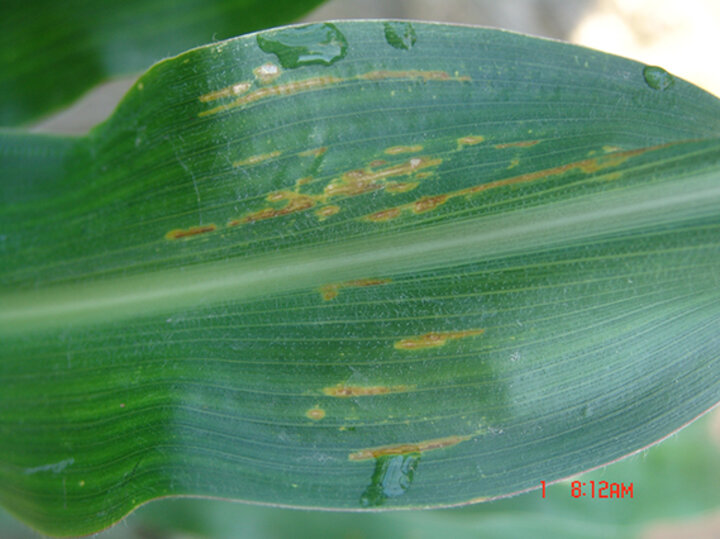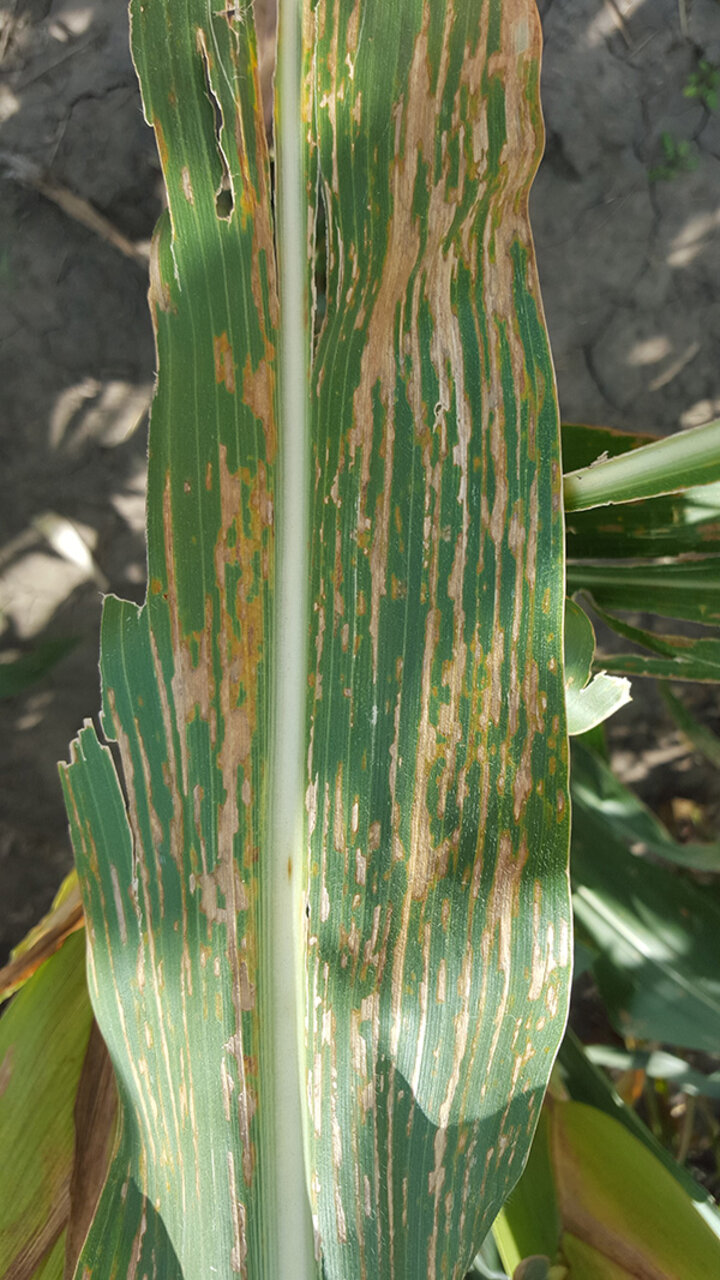

Figure 1. Bacterial leaf streak in corn may initially develop as narrow stripes between the leaf veins.
Bacterial leaf streak disease of corn, caused by Xanthomonas vasicola pv. vasculorum, has now been confirmed in Nebraska, as well as in Colorado, Illinois, Iowa, and Kansas. The disease had not been previously identified in the U.S., but had been reported on corn in South Africa. Surveys are currently underway across the Corn Belt to identify the disease distribution. Initial observations and survey results suggest that it may be widely distributed throughout the Corn Belt.Unusual symptoms were first reported on corn samples received by the University of Nebraska Plant and Pest Diagnostic Clinic. Over the last two years, the clinic has received disease samples from numerous counties across much of Nebraska, indicating the disease may be widespread and producers and others should be monitoring for its development.
No research evidence is available to predict its potential impact on yield.
Confirmation of the disease identification was delayed because of the lack of historic research on the pathogen and limited data on this bacterium and its close relatives. Advanced testing procedures were conducted on the bacteria at multiple institutions to confirm its identity. Third party confirmation was conducted by USDA-APHIS.
UNL Plant Pathologist Tamra Jackson-Ziems discusses Bacterial Leaf Streak on the Aug. 26 UNL Market Journal.
Bacterial leaf streak symptoms may look similar to those caused by other diseases, especially the fungal disease gray leaf spot. It is very important to correctly identify the disease(s) in your field to make effective treatment decisions. Foliar fungicides, which might be used to treat gray leaf spot, are not expected to control this bacterial disease.
This bacterium has also been found to cause gumming disease in sugarcane in other countries. The species is also recognized by X. campestris pv. vasculorum.
Symptoms
In Nebraska this disease has a history of early season development, having been observed as early as mid-June during the last two years.
Symptoms have been observed on dent (field), seed, popcorn and sweet corn to varying degrees. Narrow brown to yellow streaks or stripes develop between leaf veins and can be short (less than 1 inch) to very long (up to several inches). Lesions usually develop on the lower (older) plant leaves initially and over time spread across those leaves and then to leaves higher on the plant. In some cases, the disease has developed in the mid and upper canopy following high wind events. Yellow discoloration also may be present around lesions when backlit. Symptom type and severity may vary somewhat between hybrids and varieties.
Diagnosis and Management
Diagnosing the disease in the field may be difficult because it appears similar to other diseases and because the bacteria causing it are not visible to the naked eye and some microscopes. Some hybrids may produce lesions very similar to those of gray leaf spot; however, gray leaf spot lesions may more commonly have straight, smooth margins, in contrast to those of this bacterial disease that often have wavy leaf margins. It is possible to have this and other diseases, like gray leaf spot, on the same sample, further complicating diagnosis. For a diagnosis, we recommend and request submission of samples of this bacterial disease to the UNL Plant and Pest Diagnostic Clinic.
Because the disease is caused by a bacterial pathogen, we do not expect foliar fungicides to directly control it. Some bactericides, such as those containing copper, are labeled for use in corn, but their effects have not been studied on this disease. Activity of bactericides is often different than that of foliar fungicides. For example, most bactericides are contact products and not systemic, so they won’t be absorbed by plants, in contrast to many common foliar fungicides. Thus, bactericides may be washed off with rain or overhead irrigation and may require repeated applications for control, making them uneconomical or impractical for use in some corn crops.
Other common pest management strategies, such as crop rotation, may be helpful, but the host range of this pathogen is currently unknown. Sanitation practices such as cleaning debris from combines and other equipment between fields may help slow its spread to unaffected fields.
Additional research is planned and underway to better understand its biology and potential impact on corn yield as well as best management practices.
Survey and Sample Submission
Laboratories in Nebraska, including the University of Nebraska Plant Pathology Labs, are collaborating with those in other states to study the disease. The Nebraska Department of Agriculture, the USDA-Animal and Plant Health Inspection Service (USDA-APHIS) and the UNL Corn Pathology Lab with support from the Nebraska Corn Board are conducting important surveys to better understand the disease's distribution and factors contributing to its development.
If you’re unsure about a disease or other plant diagnosis, please submit a sample to the UNL Plant and Pest Diagnostic Clinic.
Resources
- Bacterial Leaf Streak in the Corn Disease Management section of CropWatch.
- UNL Photo Guide to bacterial leaf streak, gray leaf spot, norther corn leaf blight lesions in corn
- USDA statement on Xanthomonas vasicola pv vasculorum.
- Colorado State University Lab confirms Bacterial Leaf Streak in Colorado
- New Corn Disease Confirmed in United States (Kansas)
- UNL News Release, Bacterial leaf streak disease confirmed in corn in Nebraska


